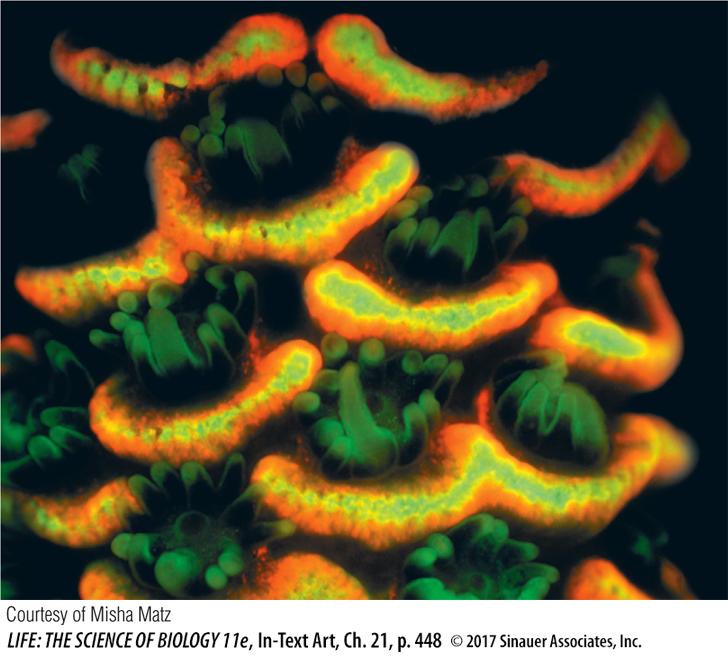Chapter Introduction
Reconstructing
and Using
Phylogenies

investigating life
Using Phylogeny to Improve a Genetic Tool
Green fluorescent protein (GFP) was discovered in 1962 when Osamu Shimomura led a team that was able to purify the protein from the tissues of the bioluminescent jellyfish Aequorea victoria. Some 30 years after GFP’s initial discovery, Martin Chalfie had the idea (and the technology) to link the gene for GFP to other protein-
Tsien was able to produce different-

How had fluorescent red pigments evolved among the corals, given that the necessary molecular changes had eluded Tsien? To answer this question, Matz sequenced the genes of the fluorescent proteins and used these sequences to reconstruct the evolutionary history of the amino acid changes that produced different colors in different species of corals.
Matz’s work showed that the ancestral fluorescent protein in corals was green, and that red fluorescent proteins evolved in a series of gradual steps. His analysis of evolutionary relationships allowed him to retrace these steps. Such an evolutionary history, as depicted in a tree of relationships among lineages, is called a phylogeny.
The evolution of many aspects of an organism’s biology can be studied using phylogenetic methods. This information is used in all fields of biology to understand the structure, function, and behavior of organisms.
How are phylogenetic methods used to resurrect protein sequences from extinct organisms?